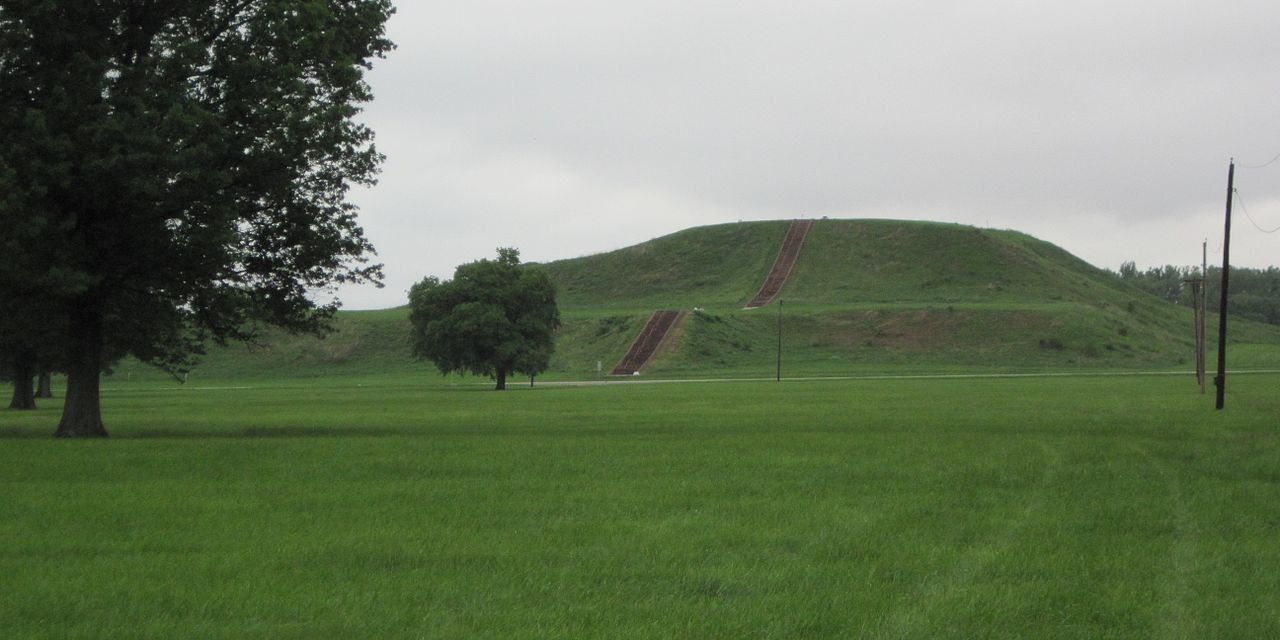Scattered across the Midwest are ancient earthworks built by Native American cultures long before the United States existed. These sacred burial mounds, shaped by hand using simple tools and earth, held deep spiritual meaning and were often used to honor the dead or mark important cultural events. Many of these sites still exist today as protected landmarks. Visiting them offers a powerful connection to the past and provides a rare chance to understand the beliefs, practices, and achievements of people who lived in the region more than 1,000 years ago.
1. Serpent Mound, Ohio
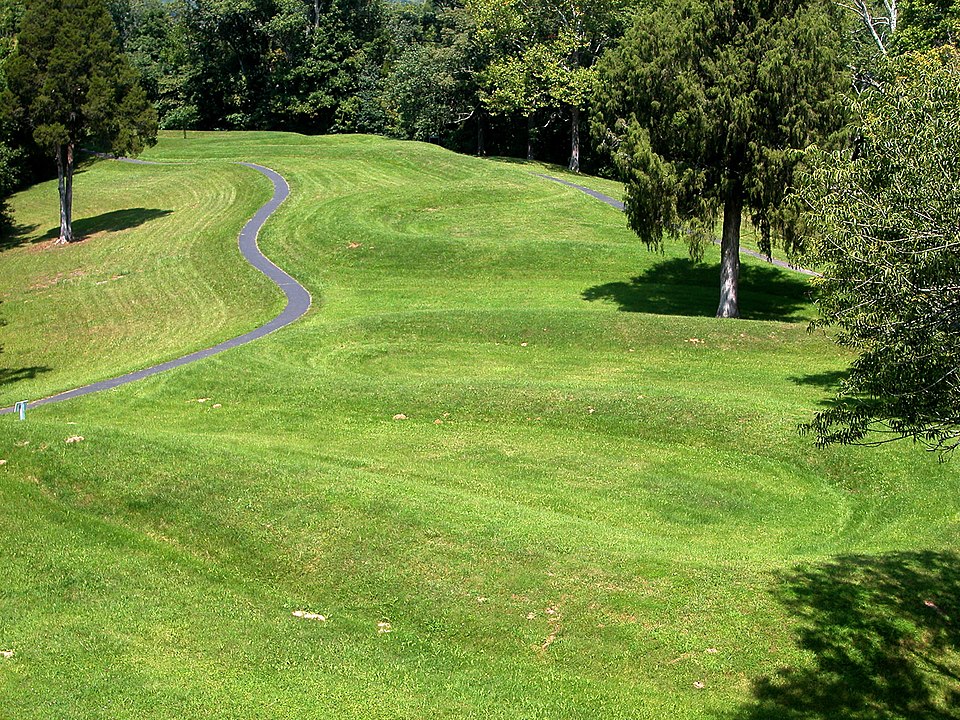
Serpent Mound in Adams County, Ohio, is one of the most famous ancient burial sites in North America. Shaped like a snake stretching 1,348 feet long, it sits on a ridgeline and was likely built around the year 1000 CE. While the mound itself doesn’t contain human remains, archaeologists found burial sites nearby that point to ceremonial and spiritual use. The serpent’s head aligns with the summer solstice sunset, and other parts of the body line up with lunar events. Today, the site is a National Historic Landmark, complete with walking trails and a museum where visitors can learn about its possible builders, including the Adena or Fort Ancient cultures.
2. Cahokia Mounds, Illinois
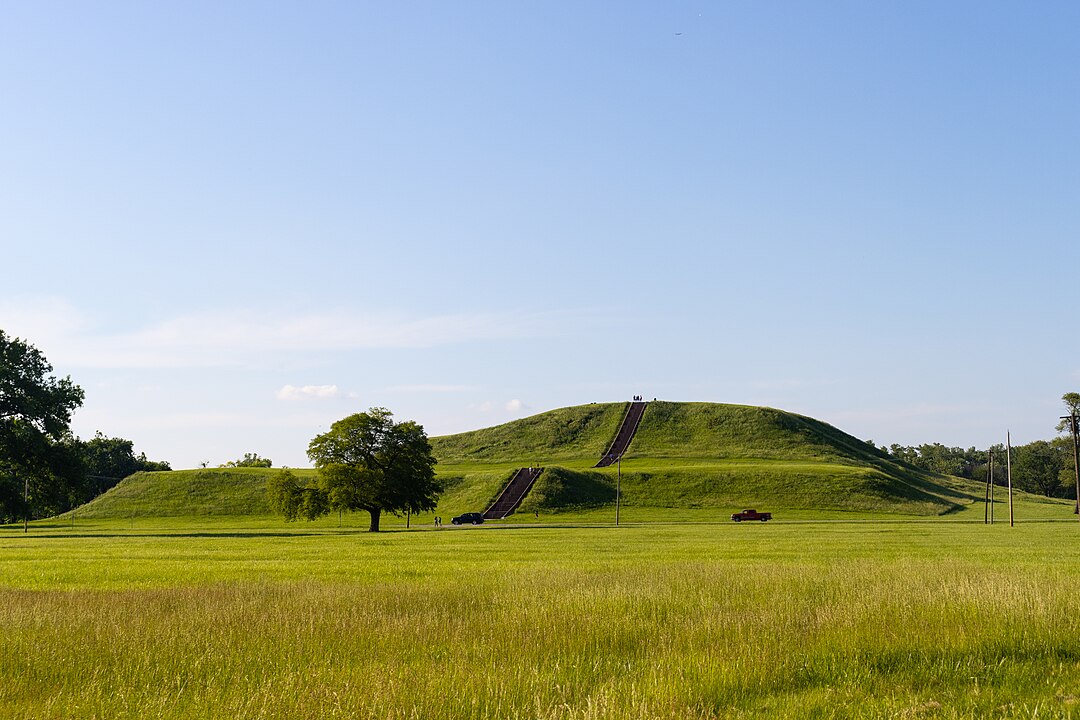
Just east of St. Louis near Collinsville, Illinois, lies Cahokia Mounds, the remains of a massive prehistoric city built by the Mississippian culture. Between 1050 and 1350 CE, Cahokia became one of the largest settlements in North America, home to over 10,000 people at its peak. The site features more than 70 preserved mounds, including Monk’s Mound, which is over 100 feet tall and covers 14 acres at its base. It served as a platform for ceremonial buildings. Cahokia was a spiritual, political, and trade center, connected to far-reaching networks. The site is a UNESCO World Heritage Site and includes a visitor center with exhibits about Mississippian life and artifacts found during excavations.
3. Effigy Mounds, Iowa
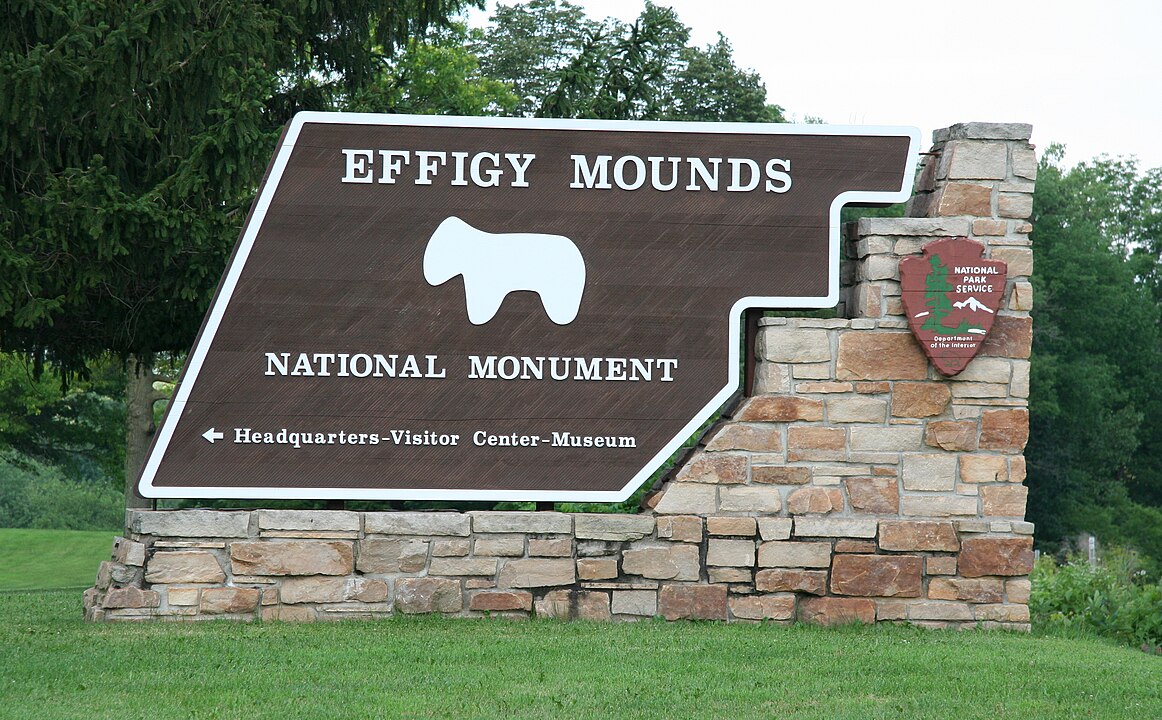
Effigy Mounds National Monument is located in northeastern Iowa along the Mississippi River. It contains more than 200 burial mounds, many shaped like animals including bears, birds, and lizards. Built between 500 and 1200 CE by the Woodland culture, the mounds are thought to hold spiritual meanings, possibly representing clan symbols or sky and earth connections. The mounds are arranged on ridges overlooking scenic river valleys, blending natural beauty with sacred space. Trails wind through the forest, offering views of the mounds and educational signs about their meaning. This site protects not just history, but also the spiritual traditions of the Native people who built them.
4. Indian Mounds Park, Minnesota
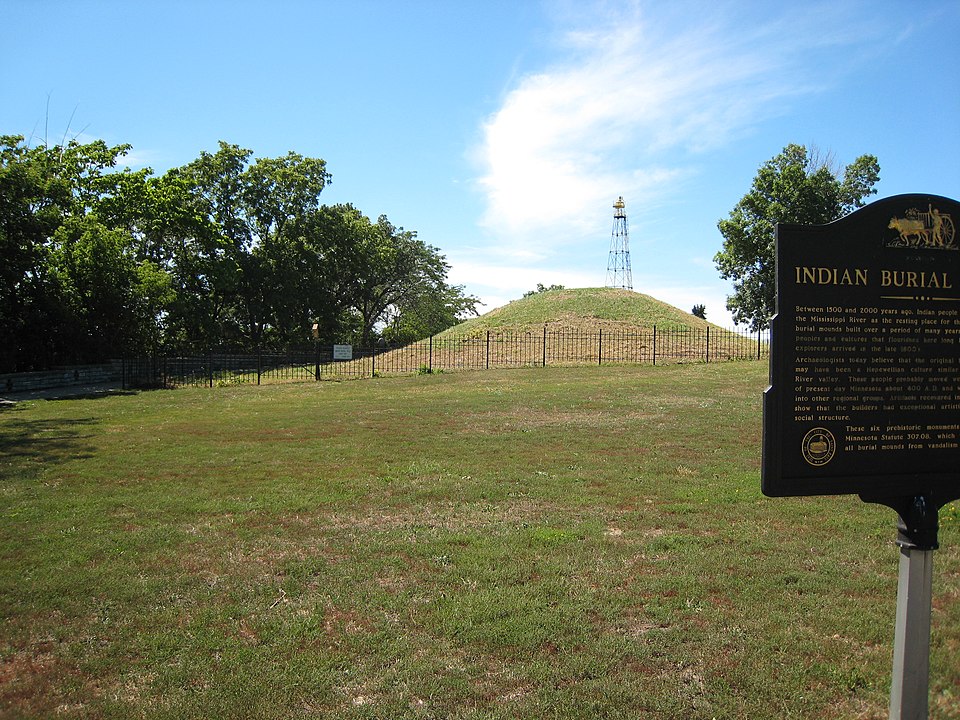
Indian Mounds Park in Saint Paul, Minnesota, sits high on a bluff overlooking the Mississippi River. The six remaining burial mounds here were constructed by the Hopewell people around 2,000 years ago, although the original number was higher. Archaeologists have discovered cremated remains, pottery, tools, and ornaments inside some of the mounds, giving clues about ancient funerary practices. The park became a public space in the 19th century, but today there is greater respect for preserving its sacred nature. Walking paths and signs provide history, while the location offers peaceful views of the river and city. It is a rare place where urban life and ancient history meet.
5. Mound City Group, Ohio
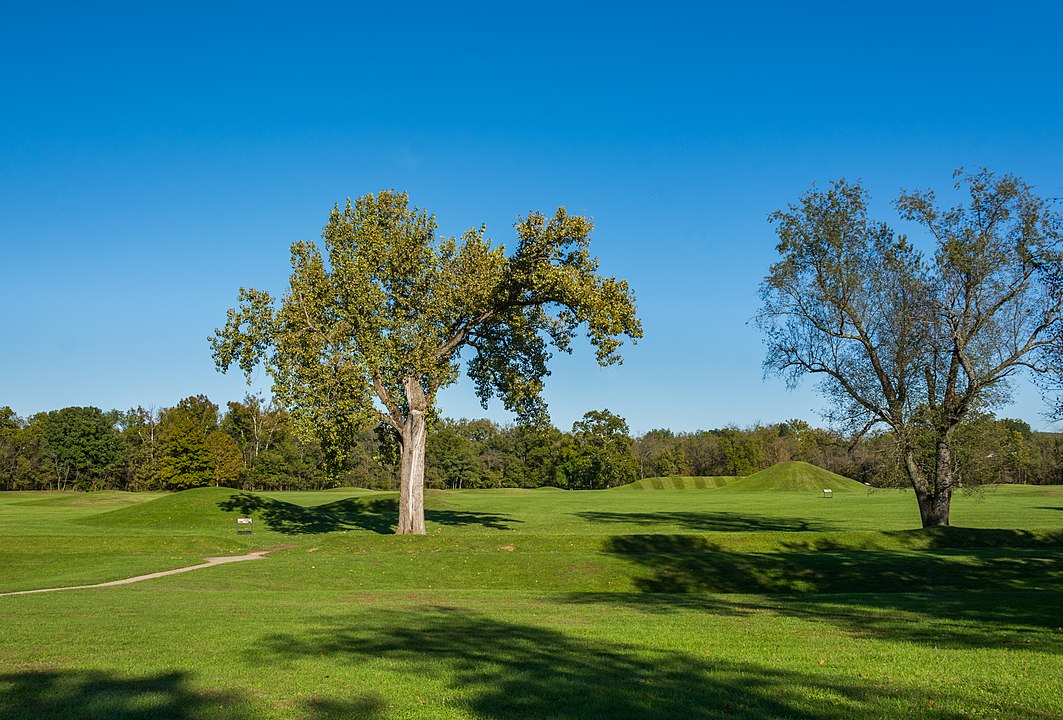
Located in Chillicothe, Ohio, the Mound City Group is part of Hopewell Culture National Historical Park. It includes 23 earth mounds built between 100 BCE and 400 CE by the Hopewell people. Each mound covers a burial pit that contained cremated remains along with intricate artifacts such as mica carvings, copper jewelry, and stone pipes. The layout of the site suggests careful planning and ceremonial use. A museum on-site displays many of the items found during excavations and explains how the Hopewell culture connected with other regions. Visitors can walk among the mounds and explore how these early communities honored their dead and expressed spiritual ideas through architecture.
6. Angel Mounds, Indiana
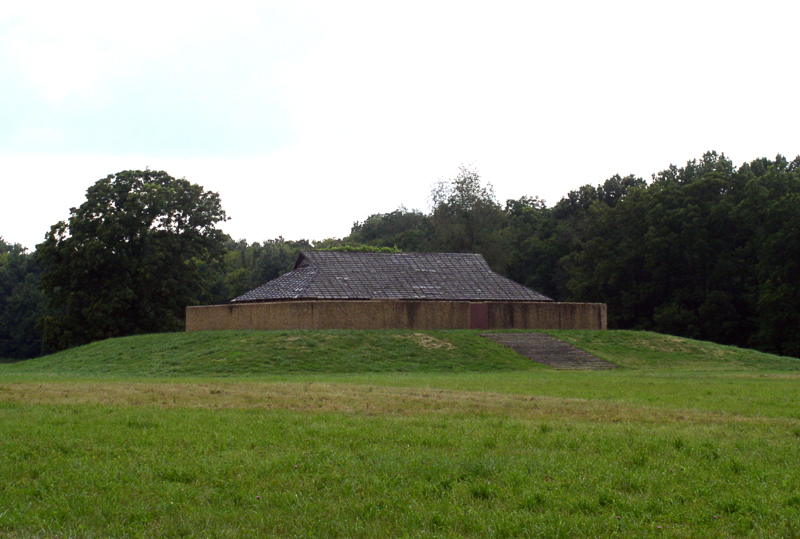
Angel Mounds, near Evansville, Indiana, is a well-preserved Mississippian site that was occupied from about 1000 to 1450 CE. It once served as a regional center, complete with large platform mounds, a central plaza, homes, and wooden palisades for protection. Archaeologists have uncovered tools, ceramics, and food remains, revealing a highly organized society. The largest mound rises 44 feet high and was likely used for religious or political ceremonies. The site also features a museum with exhibits on Mississippian daily life, burial practices, and trade. Trails wind through the area, offering views of the mounds and river, giving visitors a sense of the complex city that once stood there.
7. Aztalan State Park, Wisconsin
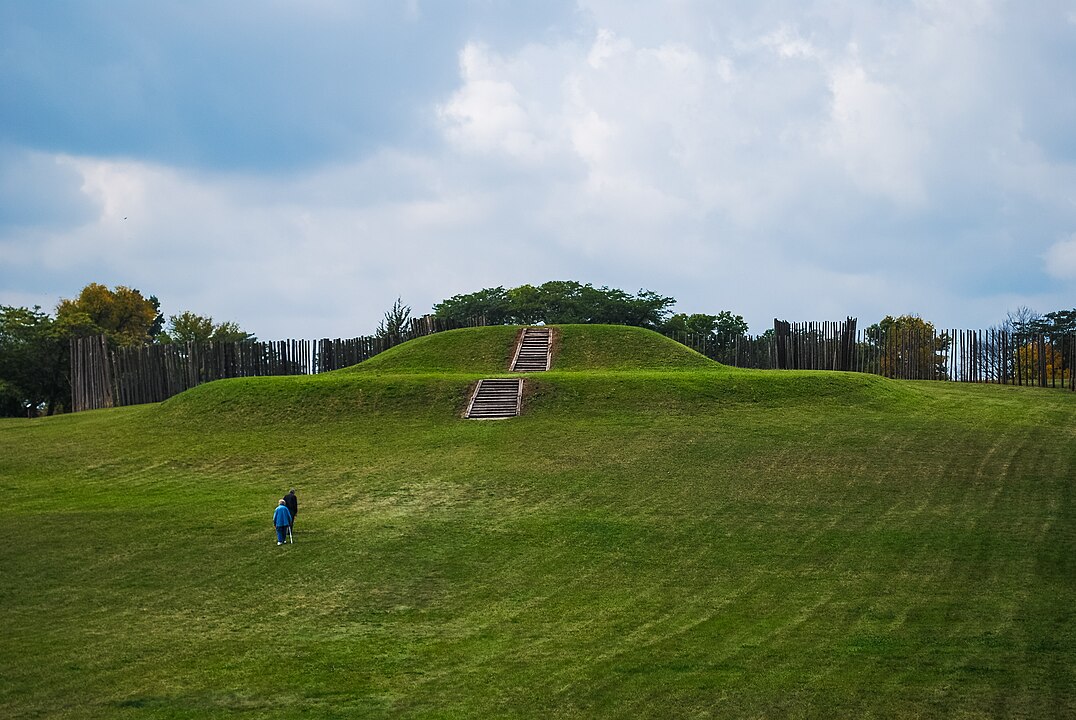
Aztalan State Park, located near Lake Mills, Wisconsin, preserves the remains of a Mississippian culture village from around 1000 CE. The site includes platform mounds, stockades, and a central plaza, showing how people here lived and worshipped. Archaeological findings include pottery, shell ornaments, and copper tools, showing that Aztalan was part of a long-distance trade network. Wooden fences have been reconstructed around the village based on posthole patterns found during digs. Visitors can walk along interpretive trails and imagine how this northern outpost of the Mississippian world once thrived. It was declared a National Historic Landmark in 1964 and remains a vital part of Wisconsin’s early history.
8. Trempealeau Mounds, Wisconsin
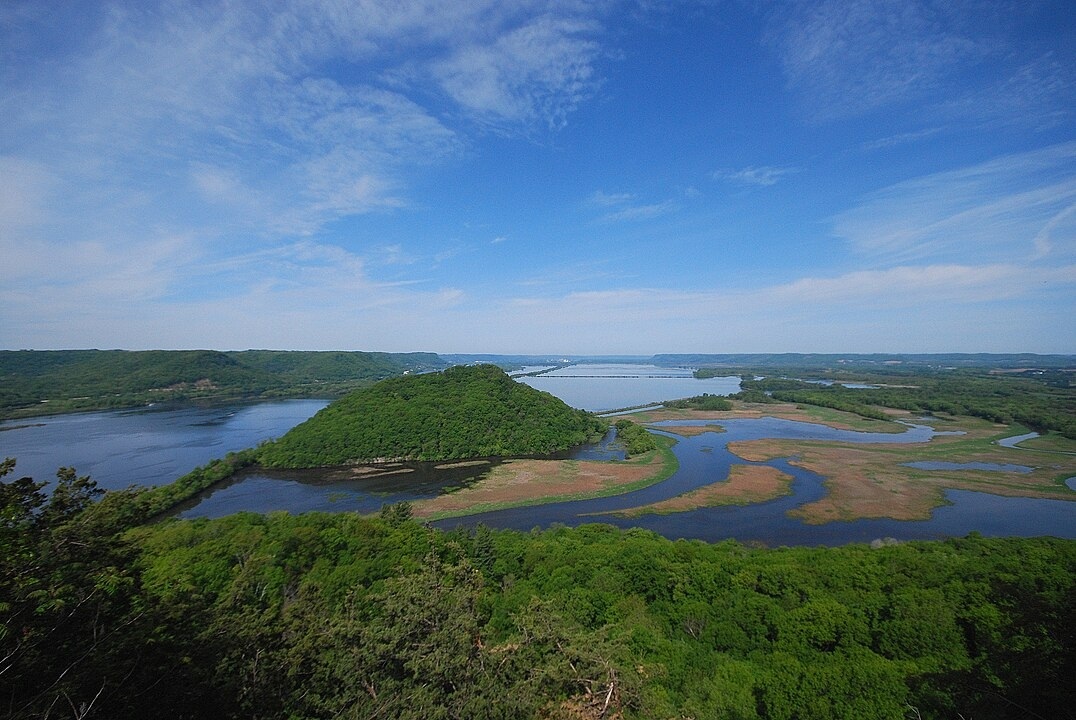
The Trempealeau region in western Wisconsin features several ancient mounds situated on bluffs near the Mississippi River. Some of these mounds date back to about 1050 CE and show signs of Cahokia cultural influence. Conical and platform-style burial mounds have been found here, along with copper tools and decorated pottery. The location was likely chosen for both spiritual and defensive reasons, offering sweeping views of the surrounding valley. Interpretive signage helps visitors understand the mound builders’ worldview and practices. The site is part of a broader sacred landscape that connects with other mound sites throughout the region, making it a quiet but meaningful destination.
9. Dickson Mounds, Illinois
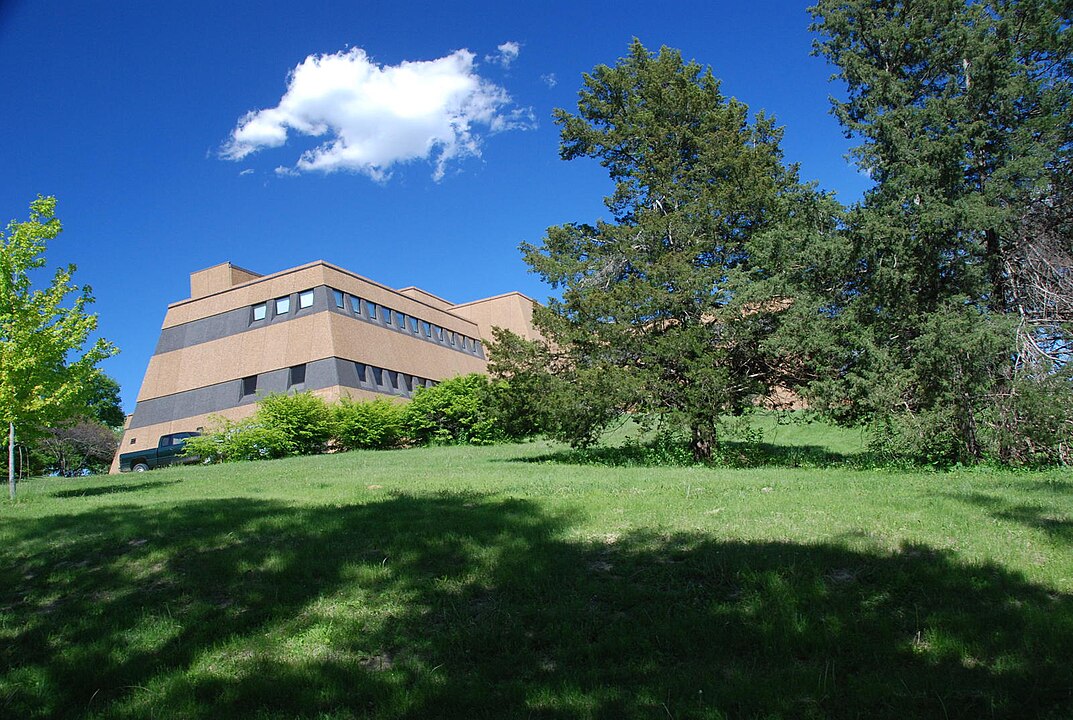
Dickson Mounds near Lewistown, Illinois, is a major archaeological site and museum located where the Illinois and Spoon Rivers meet. From around 800 to 1250 CE, it was a large Mississippian community with burial mounds, houses, and fields. Excavations revealed the remains of hundreds of individuals along with tools, ceramics, and animal bones. Earlier museum displays included exposed human burials, but in the 1990s these were respectfully reburied. Today, the site focuses on cultural education through its museum and overlooks of the surrounding landscape. It is both a memorial to past lives and a center for learning about Native cultures and their enduring legacy.
10. Rock Island Arsenal Mounds, Illinois

On Arsenal Island in the Mississippi River, near Rock Island, Illinois, several ancient mounds were built by prehistoric people over 1,000 years ago. Though much of the land is now a military base, parts of the site have been studied and preserved. Archaeologists have uncovered tools, pottery, and ceremonial objects, helping to identify the mounds as sacred burial places. Some sections of the island are open for public tours and include plaques that explain the early history of the area. The site offers a unique blend of ancient culture and modern military use, showing how the land has served many roles across the centuries.
11. Toolesboro Mounds, Iowa
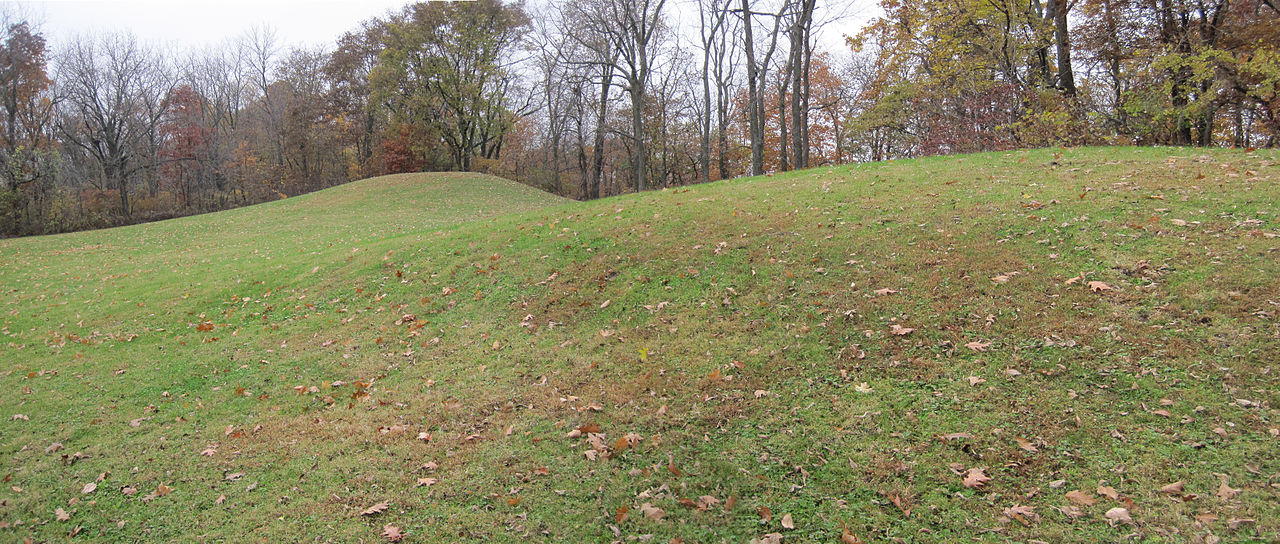
Toolesboro Mounds Preserve near Wapello, Iowa, includes seven large burial mounds created by the Hopewell culture between 100 BCE and 200 CE. The mounds sit on a bluff above the Iowa River and were part of a larger ceremonial complex. Excavations uncovered copper, mica, and stone tools, showing connections with distant regions. A visitor center on-site provides displays about the Hopewell culture and its mound-building traditions. Trails lead around the mounds, which remain mostly intact. The peaceful setting and historical importance make Toolesboro a quiet but powerful place to visit for those interested in ancient Native traditions and sacred landscapes.
12. Marquette Mounds, Wisconsin
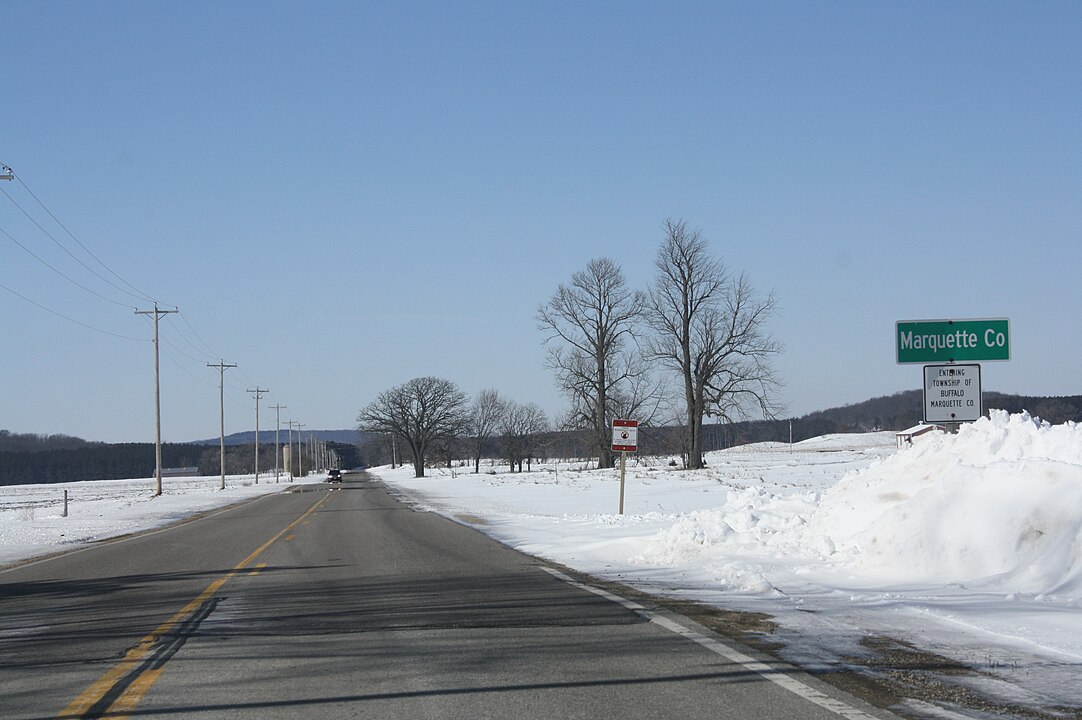
Marquette Mounds, located near the city of Marquette in central Wisconsin, features a group of burial mounds that were likely constructed between 700 and 1200 CE. The site includes conical and linear mounds, with some possibly used for ceremonial or clan purposes. Though less well-known than other mound sites, it offers a rich look at the Woodland cultures that once lived in the region. The area is now protected within a forest preserve, with walking trails and educational signs for visitors. The quiet woods and well-kept trails make it a respectful place to reflect on the lives and beliefs of those buried there.
